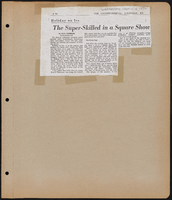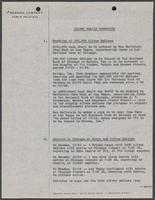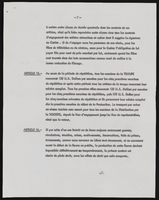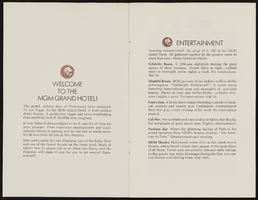Search the Special Collections and Archives Portal
Search Results
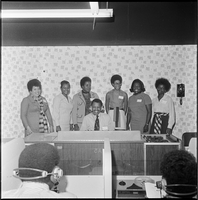

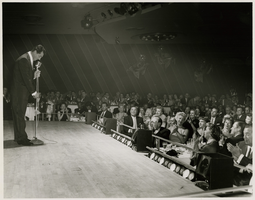
Photograph of Dean Martin, debut performance, Sands Copa Room, Las Vegas, March 6, 1957
Date
Archival Collection
Description
Dean Martin onstage for his debut as a single star in the Sands Hotel Copa Room in Las Vegas. Seated in front of the stage are producer Jack Entratter (with striped tie), Jack Benny (applauding, with hands in front of face), Lucille Ball (with fur stole), Desi Arnaz, Debbie Reynolds (wearing pearl necklace), and Phil Harris (far right).
Image
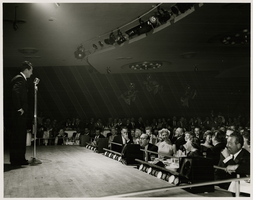
Photograph of Dean Martin with celebrities in the audience, Sands Copa Room, Las Vegas, March 6, 1957
Date
Archival Collection
Description
Dean Martin onstage for his debut as a single star in the Sands Copa Room, March 6, 1957. Seated in front of the stage are producer Jack Entratter (with striped tie), Jack Benny, Lucille Ball, Desi Arnaz, Debbie Reynolds (in dark, lacy dress), and Phil Harris (at far right)
Image
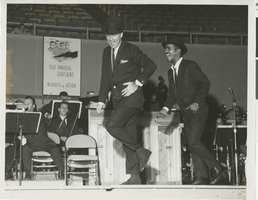
Photograph of Peter Lawford and Sammy Davis, Jr., dancing onstage during a Four Immortal Chaplains benefit at the Las Vegas Convention Center, February 7, 1960
Date
Archival Collection
Description
Peter Lawford and Sammy Davis Jr. dancing onstage during a Four Immortal Chaplains benefit at the Las Vegas Convention Center on February 7, 1960.
Image
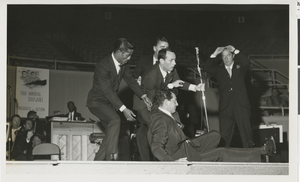
Photograph of Sammy Davis, Jr., Joey Bishop, Peter Lawford and Dean Martin onstage during a Four Immortal Chaplains benefit at the Las Vegas Convention Center, February 7, 1960
Date
Archival Collection
Description
Sammy Davis, Jr., Joey Bishop, Peter Lawford and Dean Martin grabbing for the microphone onstage during a Four Immortal Chaplains benefit at the Las Vegas Convention Center on February 7, 1960
Image

